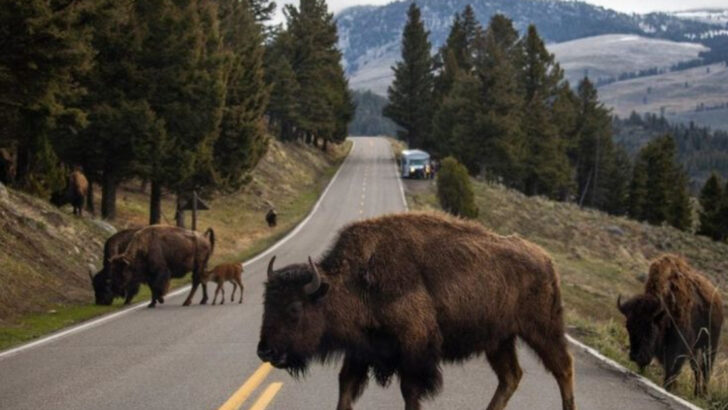Yellowstone National Park, a vast wilderness of geothermal wonders and stunning landscapes, attracts millions of visitors each year.
However, beneath its beauty lies a variety of dangers that can pose serious risks to unprepared adventurers.
This guide explores 17 potential hazards in Yellowstone and offers practical advice to ensure a safe and memorable visit.
From unpredictable wildlife to volatile geothermal areas, understanding these dangers is crucial for every visitor.
Equip yourself with knowledge and enjoy the splendor of Yellowstone, while staying mindful of the safety measures necessary for a secure exploration.
Unpredictable Wildlife
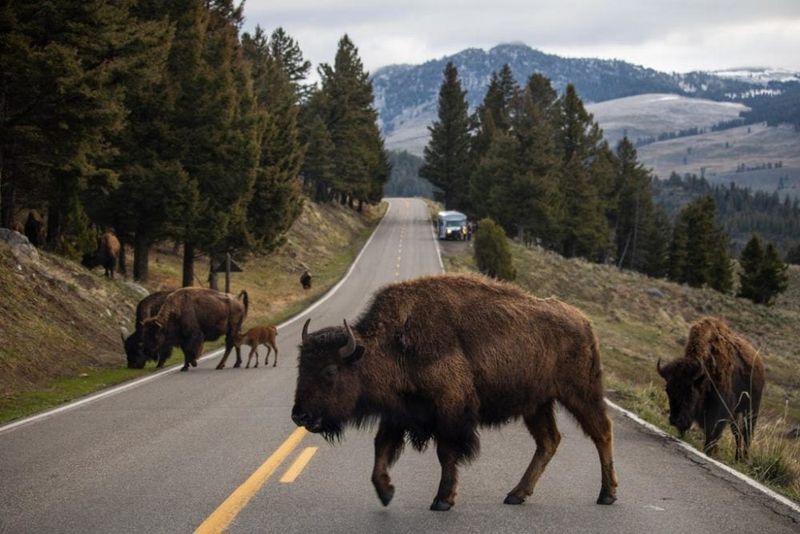
Bison, bears, and other wildlife are iconic features of Yellowstone, but they can be unpredictably dangerous. Bison may appear docile but can charge unexpectedly, reaching speeds of up to 30 mph.
Bears, both black and grizzly, roam freely. Keeping a safe distance, at least 100 yards from bears and 25 yards from other wildlife, is crucial. Carry bear spray and know how to use it.
Avoiding surprise encounters by making noise and hiking in groups can reduce risks. Remember, these animals are wild, and respecting their space is key to safety.
Volatile Geothermal Areas
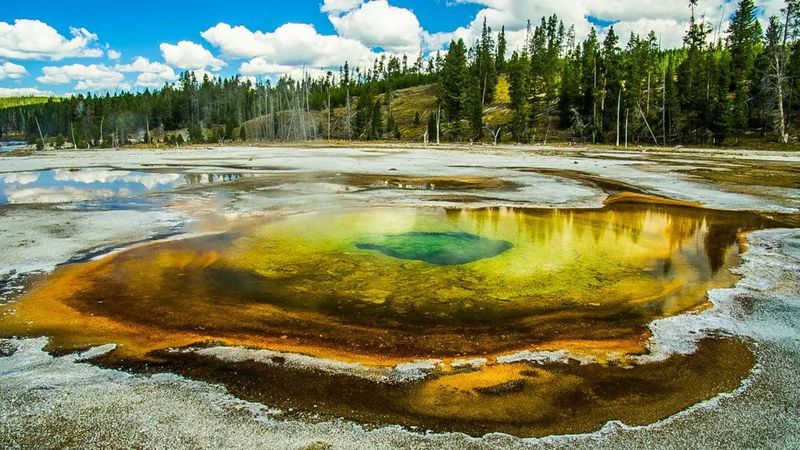
Yellowstone is home to over 10,000 geothermal features, including hot springs and geysers. These beautiful but volatile areas can be extremely dangerous. Thin crusts cover scalding water, making it essential to stay on marked paths.
Ignoring warnings can lead to severe burns or worse. Educate yourself about the geothermal features before visiting. The mesmerizing colors may tempt you to get closer, but safety must take precedence.
Always adhere to park guidelines, as the geothermal areas are fragile and hazardous.
Sudden Weather Changes
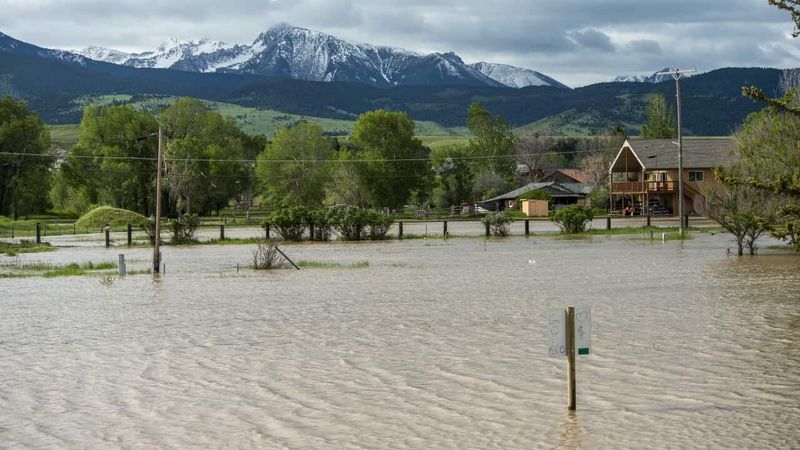
Weather in Yellowstone can change rapidly, transforming a sunny day into a severe thunderstorm within hours. Being prepared for sudden shifts is vital. Carrying rain gear, warm clothing, and an emergency kit is wise.
Monitor weather forecasts and adjust plans accordingly. Recognizing signs of changing weather, such as darkening clouds and increasing winds, can prevent unpleasant surprises.
Learn how to find shelter during storms and avoid open areas during lightning. Preparedness is the key to dealing with Yellowstone’s capricious climate.
Treacherous Hiking Trails
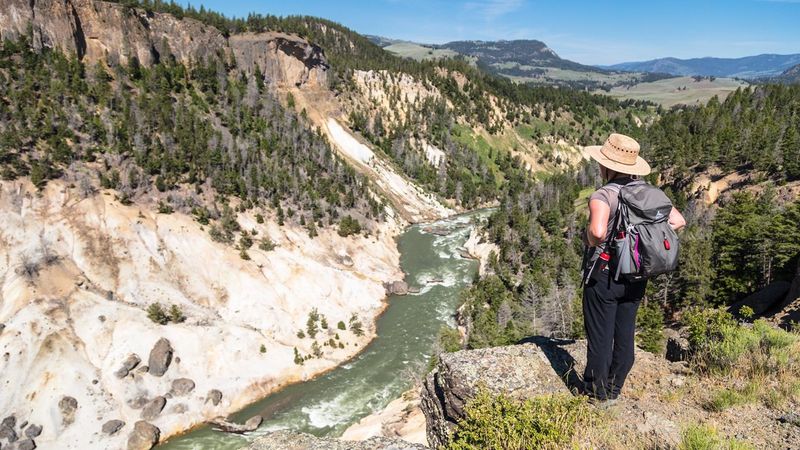
Yellowstone offers a myriad of hiking opportunities, but many trails can be treacherous. Rocks, roots, and steep inclines require careful navigation.
Proper footwear, like hiking boots, is essential for stability. Know your limits and choose trails that match your experience level. Carrying a map and compass, along with a fully charged GPS device, can prevent getting lost.
Informing someone of your plans ensures help is available if needed. Staying on marked trails reduces risks of injury or becoming disoriented in this vast wilderness.
Altitude Sickness
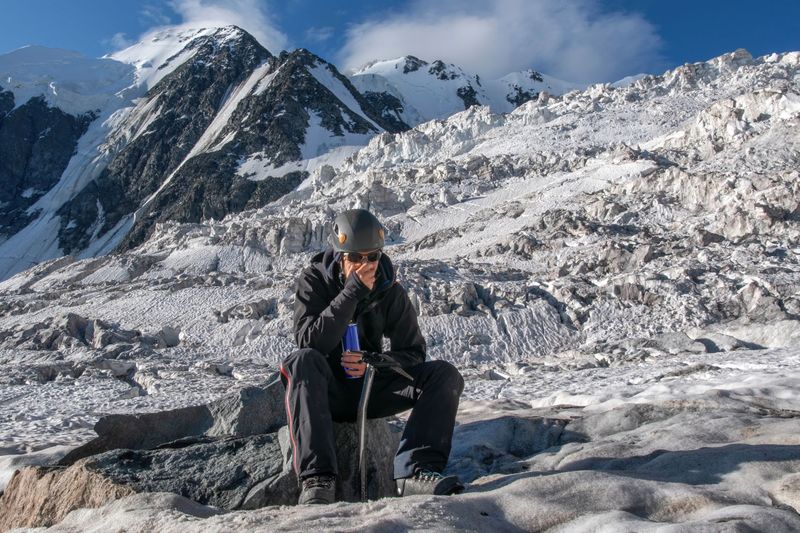
Yellowstone’s high altitudes can lead to altitude sickness, particularly for those unaccustomed to such elevations. Symptoms include headaches, dizziness, and nausea.
Gradual acclimatization helps mitigate these effects. Drinking plenty of water and avoiding alcohol further aids adaptation. Recognizing symptoms early allows for timely intervention, such as descending to lower altitudes.
Taking it slow, especially on the first few days, supports adjustment. With awareness and care, the breathtaking vistas of Yellowstone can be enjoyed without discomfort.
River Currents
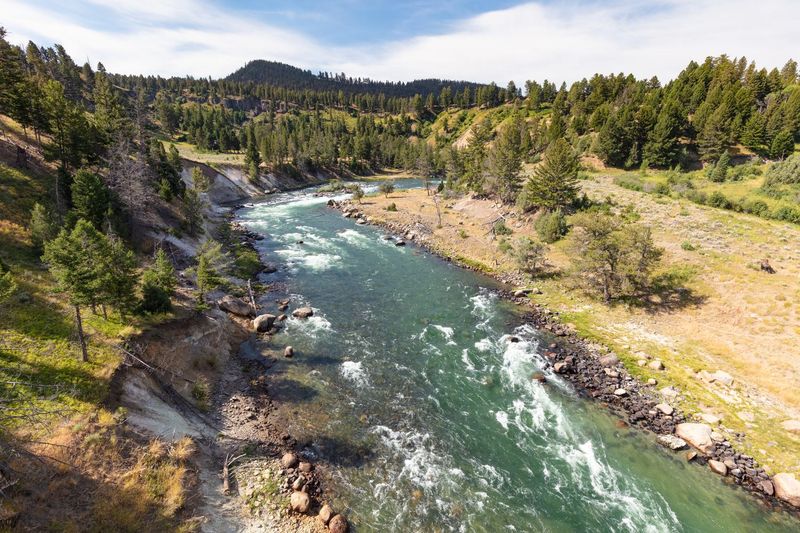
Yellowstone’s rivers, while picturesque, harbor strong currents that can prove perilous. Even shallow waters may conceal powerful undertows. Swimming is often discouraged, and visitors should heed warning signs.
Wearing a life jacket when near water and supervising children closely are wise precautions. Avoid crossing rivers without proper equipment and knowledge, as slippery rocks can lead to falls.
Understanding the strength of these currents and respecting their danger ensures a safe and enjoyable experience near Yellowstone’s waterways.
Remote Locations

The remote expanses of Yellowstone offer solitude and beauty but also pose risks due to their isolation. Communication can be limited, and help may be far away.
Carrying a satellite phone or emergency locator beacon can bridge this gap. Always travel with enough supplies, including food, water, and a first-aid kit. Informing others of your itinerary adds a layer of safety.
Exploring these remote areas requires preparation and respect for the wilderness. With the right precautions, the isolation becomes a rewarding adventure.
Hypothermia Risk

Even in summer, Yellowstone’s temperatures can plummet, increasing the risk of hypothermia. Dressing in layers and carrying extra clothing are essential strategies.
Recognizing early signs like shivering and confusion allows for prompt action. A warm drink and dry clothes can reverse mild hypothermia. Avoiding alcohol helps maintain body temperature.
Preparing for cold nights by choosing appropriate sleeping gear ensures comfort. Understanding the climate of Yellowstone and taking these precautions safeguards against the chilling grasp of hypothermia.
Wildfires
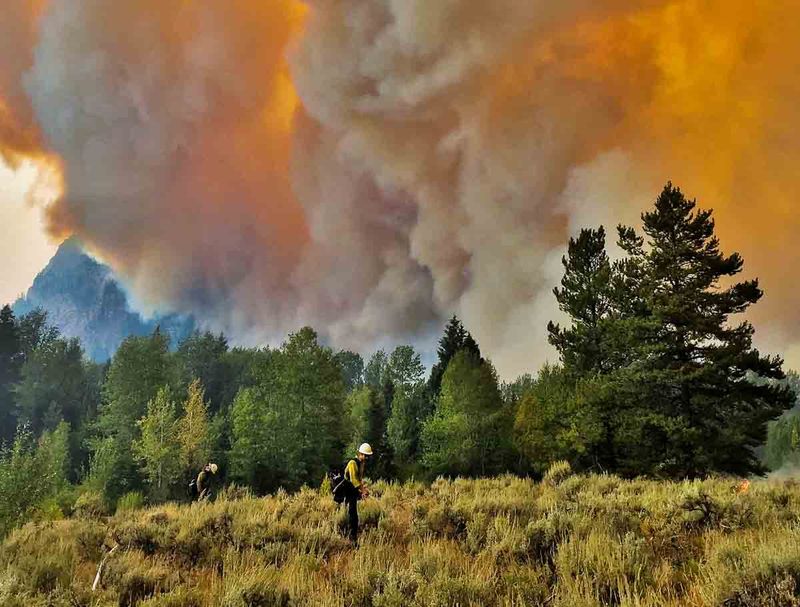
Wildfires are a natural part of Yellowstone’s ecosystem but pose significant risks to visitors. Monitoring fire warnings and adhering to park regulations about fire use are crucial.
Campfires should be built only in designated areas and fully extinguished before leaving. Understanding evacuation routes helps in case of emergency. Staying informed through park alerts and ranger stations enhances safety.
While fire rejuvenates the landscape, respecting its power ensures both personal safety and the preservation of Yellowstone’s environment.
Poisonous Plants
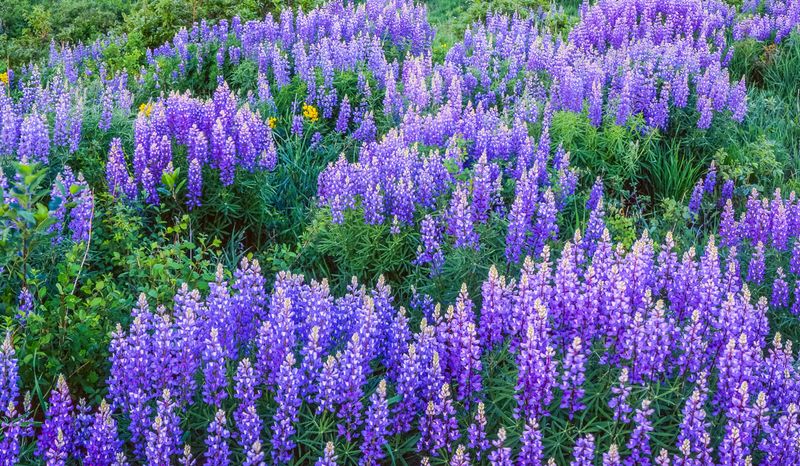
Yellowstone’s flora, though beautiful, includes poisonous plants like poison ivy and deadly nightshade. Learning to identify these plants helps avoid contact.
Symptoms from exposure can range from mild irritations to severe reactions. Wearing long sleeves and pants minimizes skin exposure. If contact occurs, washing the area with soap and water is advised.
Understanding the park’s plant life and exercising caution allows for safe enjoyment of its botanical beauty.
Avalanche Hazards
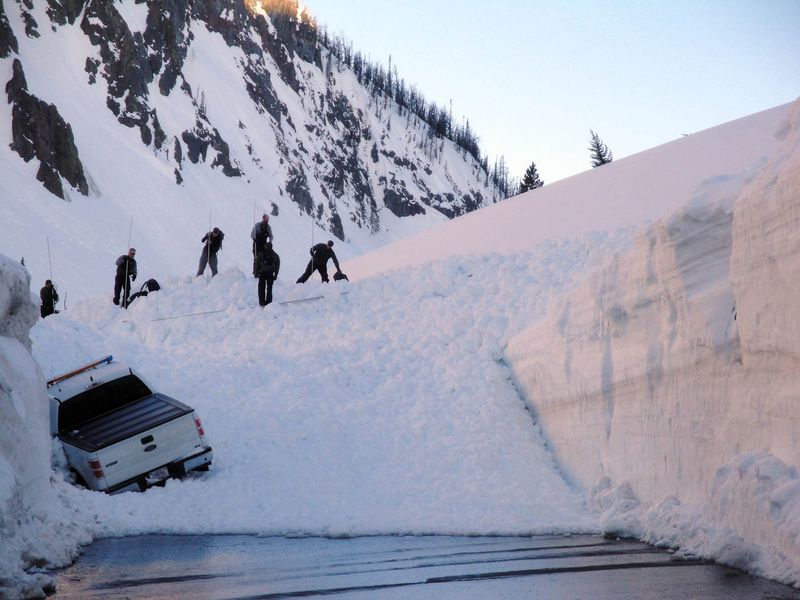
In winter, Yellowstone’s snow-covered slopes allure skiers and snowboarders, yet avalanches loom as a significant threat. Recognizing warning signs, such as cracking noises or sudden snow shifts, is vital.
Carrying avalanche safety equipment, including a beacon, probe, and shovel, is recommended. Training in avalanche response ensures preparedness.
Checking forecasts and choosing routes wisely minimizes risks. Understanding and respecting avalanche hazards transforms a potentially dangerous activity into an exhilarating adventure.
Insect Bites
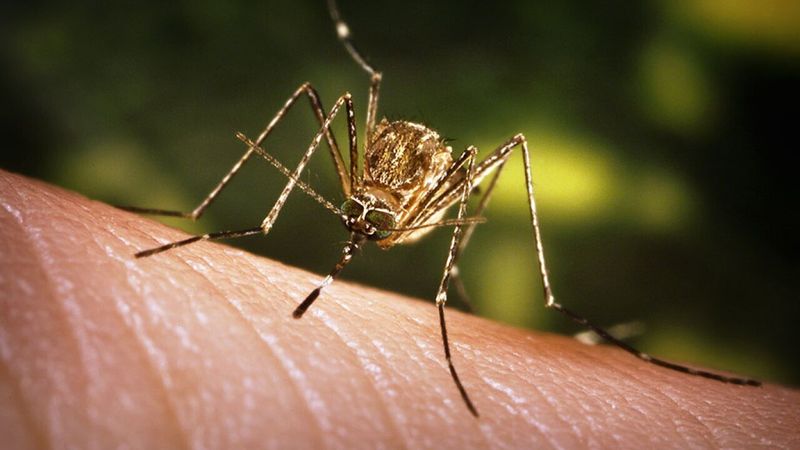
Insects, including mosquitoes and ticks, can be more than nuisances in Yellowstone, transmitting diseases such as West Nile Virus and Lyme disease. Using insect repellent and wearing protective clothing are effective deterrents.
Checking for ticks after hikes prevents potential infections. Understanding the local insect life and taking preventive measures ensures a pleasant experience.
These tiny creatures, while part of the ecosystem, need respect and caution to keep their impact minimal.
Overcrowded Areas
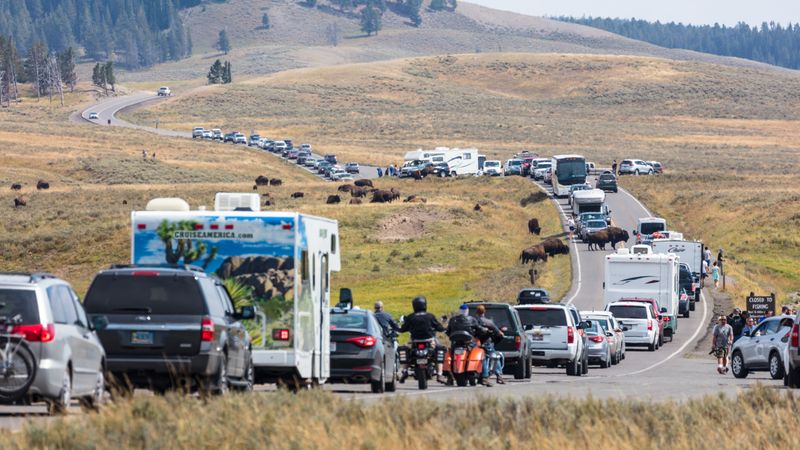
Yellowstone’s popularity often leads to overcrowded spots, detracting from the wilderness experience and posing safety risks. Planning visits during off-peak times and exploring lesser-known areas enhances enjoyment.
Patience and politeness maintain harmony. Being aware of surroundings helps avoid accidents. Respecting personal space and conserving the environment ensures a memorable visit for all.
Embracing the park’s vastness by venturing beyond congested sites reveals Yellowstone’s true splendors.
Poor Navigation
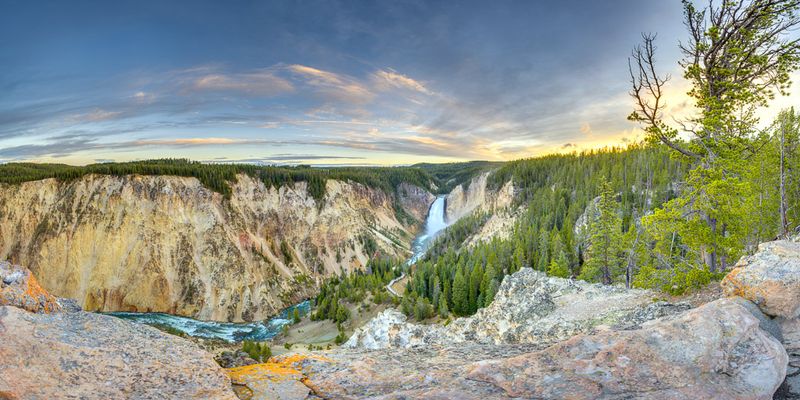
Navigating Yellowstone’s vast wilderness can be challenging. Relying solely on smartphones may be unreliable due to signal issues. Carrying physical maps and a compass provides a backup.
Familiarizing yourself with landmarks and trail markers aids navigation. Informing others of your route ensures assistance if needed. Practicing basic navigation skills transforms potential confusion into confident exploration.
Proper preparation allows you to experience the park’s wonders without worry.
Dehydration
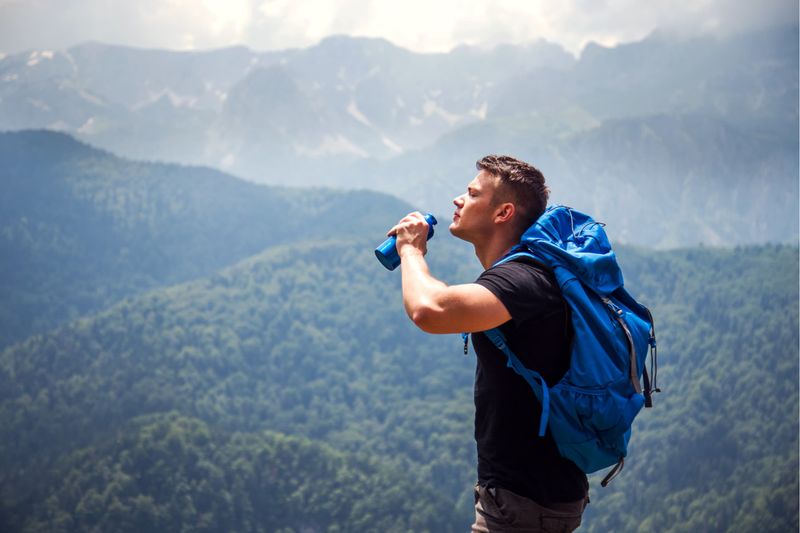
Exploring Yellowstone’s landscapes can lead to dehydration, especially during strenuous activities. Carrying sufficient water and taking regular breaks helps maintain hydration.
Recognizing symptoms like dizziness and dry mouth allows for timely intervention. Choosing shaded paths and wearing a hat reduces heat exposure. Understanding the importance of hydration in this vast wilderness ensures a healthy and energetic visit.
By staying vigilant, the park’s beauty can be fully appreciated without health compromises.
Cultural Misunderstandings

Yellowstone’s rich cultural history is sometimes overlooked, leading to misunderstandings with local communities. Engaging with park rangers and participating in cultural programs enhances appreciation.
Respecting sacred sites and learning about indigenous traditions fosters positive interactions. Acknowledging the cultural significance of the land adds depth to your visit.
Understanding and embracing the park’s cultural heritage transforms a simple trip into a meaningful journey.
Digital Distractions
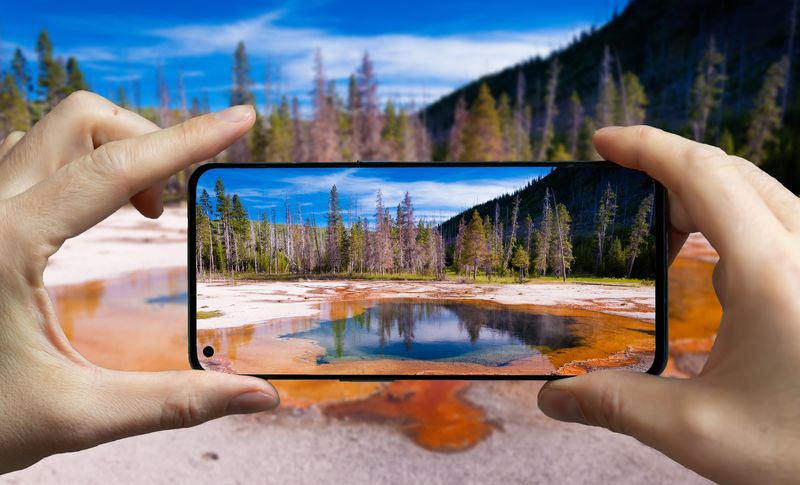
In the age of smartphones, digital distractions pose a unique danger at Yellowstone. Visitors often find themselves more focused on capturing the perfect photo than observing their surroundings. This can lead to mishaps, especially near geothermal areas or wildlife.
Imagine standing at the edge of a geyser, eyes glued to a screen, and missing a warning sign. Awareness is key to safety. Put the device away and truly engage with the environment.
Did you know? Many accidents occur because visitors are distracted by their phones. Prioritize presence over pixels.

